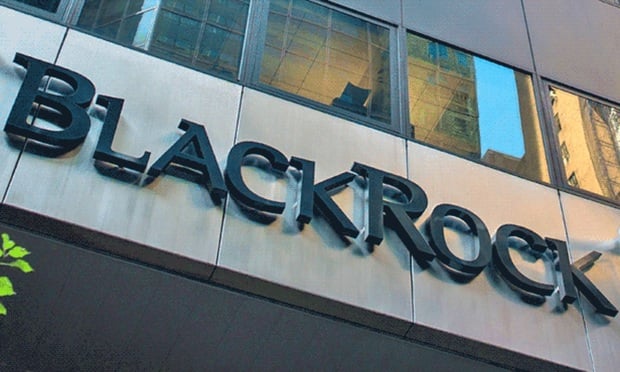
The Bureau of Labor Statistics (BLS) projects that one-third (32%) of those aged 65 to 74 are expected to remain in the workforce by 2030 – a figure that's grown 13% over the last two decades. A combination of factors including shifting perceptions of aging have encouraged employers to recognize the unique value that older employees offer as workers, colleagues and mentors. By putting measures in place to support their older workers, employers can benefit through retention and save on the cost of recruiting, onboarding and training new employees.
Voya Cares — a program of Voya Financial that is committed to making a positive difference in the lives of people with disabilities and special needs from birth through aging — joined forces with Easterseals on research to help employers understand the changing landscape of traditional retirement planning. The research paper, Employment Extenders: A (labor) force to be reckoned with, uncovered who employment extenders are, why they matter and how employers can help them. For example, tailored workplace benefits can help to retain "employment extenders" – older workers who are staying in the workforce.
 Jessica Tuman, VP, Voya Cares
Jessica Tuman, VP, Voya Cares Recommended For You
Jessica Tuman, vice president of Voya Cares, which helps people with disabilities and special needs and caregivers plan for the future they envision with a focus on advocacy, solutions and support resources, shares her thoughts about the research findings and the role that benefits can play in retaining this group.
Q. How do you define employment extenders?
A. Before defining employment extenders, it's important to set the context. Over the past three or four years, we have seen a changing demographic in the workplace: workers aged 55 and older represent an increasing segment of the workforce, and BLS estimates that over the next decade, there will be continued growth in the workforce participation rate of those past traditional retirement years — aged 65 to 74. At the same time, we have seen a shift in how Americans view work, rethinking whom they work for, where their work is located and the role that their work should play in their lives. Employers also are experiencing changing labor needs, all of which suggests the importance of new strategies for retaining long-term loyalty from employees.
The BLS statistics helped to define what an employment extender is for us at Voya: Our research sample is composed half of adults 50 and older who previously retired from one career but are still working at another job today, and the other half is composed of adults who are at least 65 years old and currently do/plan to work past retirement age, retiring at age 70 or later or not at all.
Q. For employers, what are the advantages of keeping older employees in the workplace?
A. Two priorities that employers are expected to continue to prioritize in 2024 and beyond include:
- Leveraging internal talent to acquire new skills and capabilities, called "quite hiring," and
- Working to address a workforce-wide erosion of social skills.
Employment extenders are a key segment of an employer's labor force needed to achieve these goals as they represent years of investment in training and development, and, as a result, are likely to have eclectic and varied experience and knowledge. In addition, they can serve as mentors to model professionalism to younger and new employees who have had little-to-no in-office experience interacting with colleagues.
Q. How are the needs of employment extenders unique from their colleagues?
A. Employment extenders can have unique needs that may influence how they use existing benefits and could simultaneously be looking for a few different benefit offerings that a current employer may not already provide.
First, they may have additional streams of income to be reallocated using solutions such as catch-up contributions, Roth accounts or IRAs. Additional streams of income include:
- Pension from previous employer
- Required Minimum Distributions (RMD) from a tax-advantaged retirement plan
- Social Security retirement payments
Employment extenders are also facing the increased likelihood that they will need care or be a caregiver themselves, yet only a quarter are planning for that almost certain eventuality.
Despite the fact that one-quarter of Americans ages 65-74 (24%) and almost half of those ages 75 and older (46%) have a disability, few are taking steps to prepare for a future where they might not be able to work as long as they went – physically or mentally.
Further, becoming a caregiver is clearly in many employment extenders' futures. According to the Centers for Disease Control, about one-in-five Americans provides regular care or assistance to a friend or family member with health issues or a disability. About 25% of these caregivers are between ages 45 and 64 and nearly 19% are 65 or older. In addition, only one-quarter of employment extenders are planning for the possibility of providing care or support for a partner or loved-one.
Q.What types of benefits packages and other services should employers offer to support and retain employment extenders?
A.One of the most pervasive needs that this group expressed in our research is in education and guidance in the following areas:
- Help transitioning to retirement
- How to maximize benefit dollars across health and wealth benefits
- Estimating income needs in retirement
Our findings suggest that many of the unique needs of employment extenders can be met by benefits and services that employers already offer as part of their benefits packages. Targeted communication on how existing employee benefits can help meet their unique needs may be all that is needed, including such topics as:
- Saving in Health Savings Accounts (HSA) to carry over for medical expenses in retirement
- Retirement options with guaranteed streams of income work
- Putting aside funds in an emergency savings account to maintain retirement savings, even during financial emergencies
- Student debt programs that may help those approaching retirement pay down their student debt, which may hinder or even prevent accumulation of retirement savings (At over $45k, 50-to-61-year-old borrowers had the highest average student loan debt.)
The last category of benefits and services that employers can offer to employment extenders is support for caregivers, ranging from support groups and specialized financial planning to online platforms that help employees navigate the administrative tasks of caring for loved ones.
Related: Recovery mode: Getting caregivers back on track for retirement savings
The bottom line from our research – one that is becoming increasingly important over time – is that employers should work hard to retain the employment extenders currently in their workforce. Once they retire, our findings imply that workers are not likely to return, with less than 30% saying they will come back to work. The benefits packages that employers offer is an important part of keeping employment extenders in place through their late 60s and even into their 70s.
© Touchpoint Markets, All Rights Reserved. Request academic re-use from www.copyright.com. All other uses, submit a request to [email protected]. For more inforrmation visit Asset & Logo Licensing.







